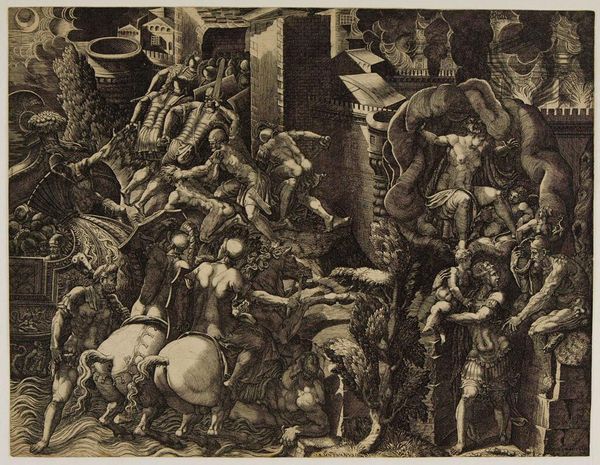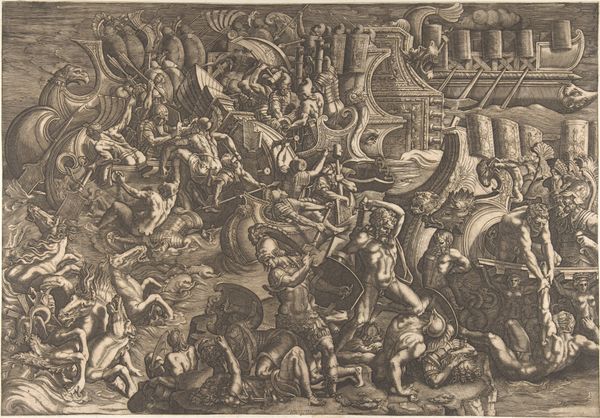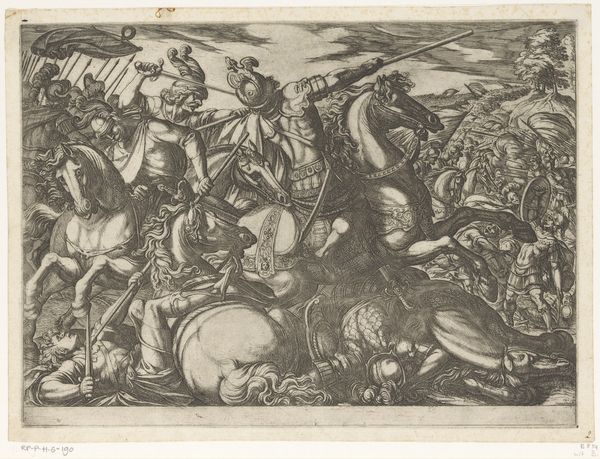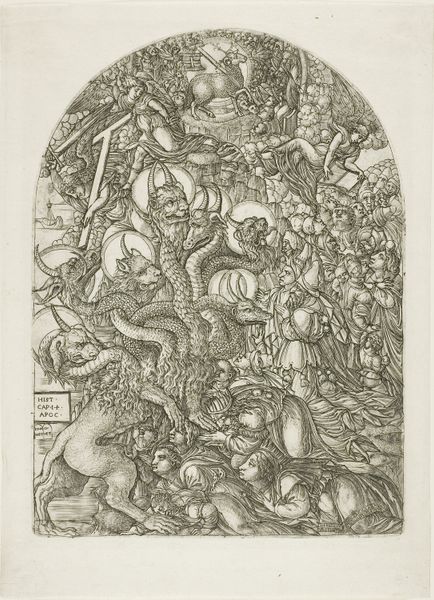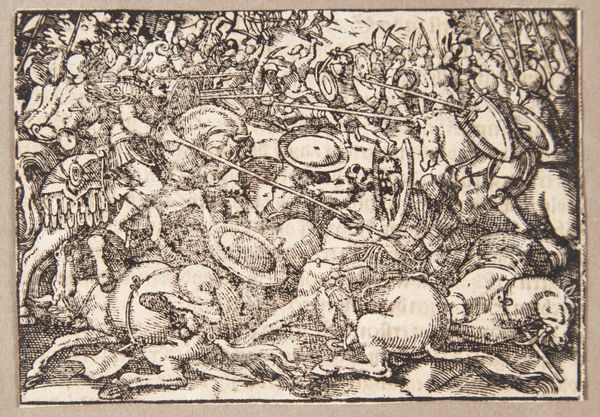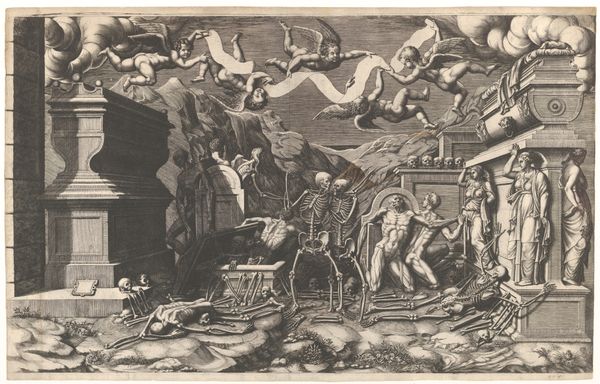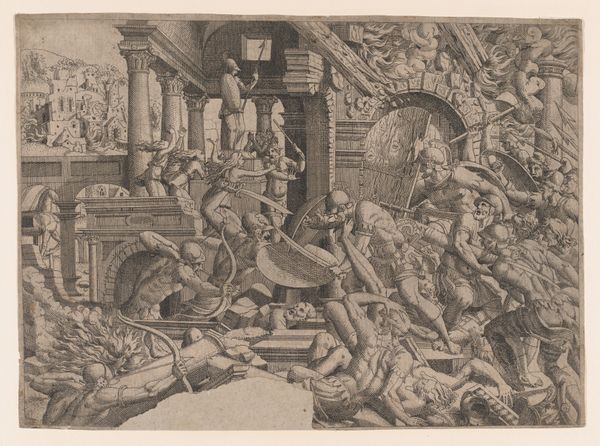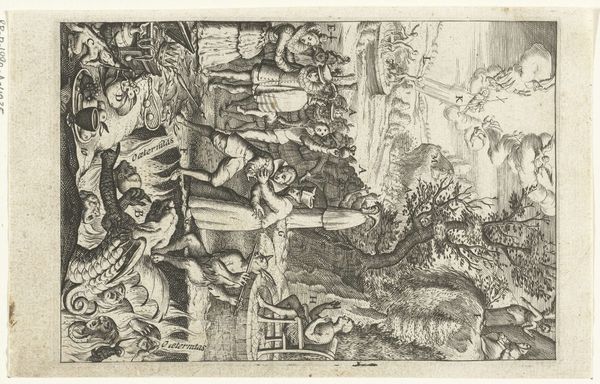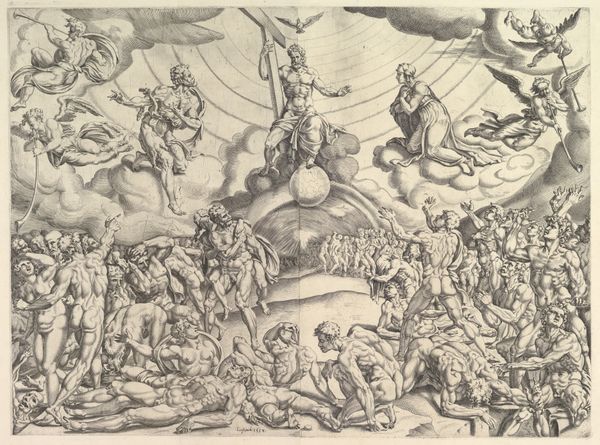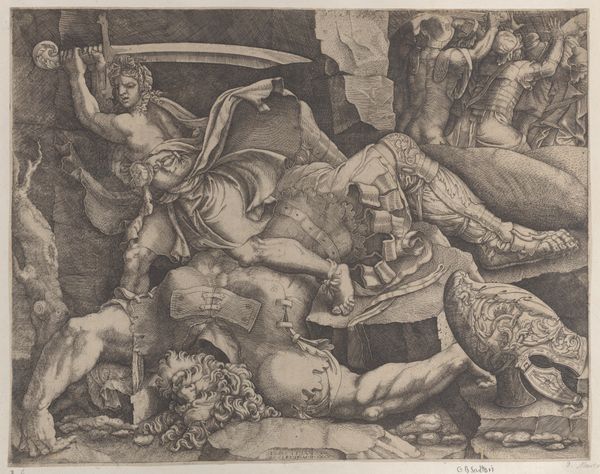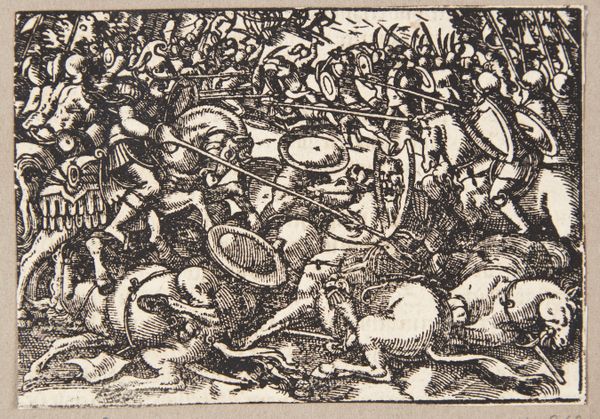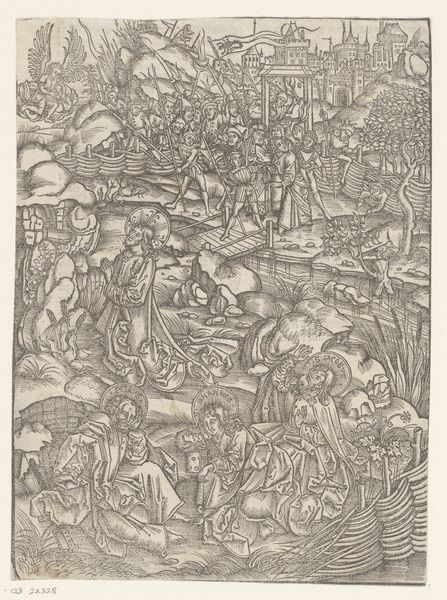
drawing, print, intaglio, engraving
#
drawing
#
pen drawing
# print
#
intaglio
#
war
#
landscape
#
mannerism
#
figuration
#
form
#
horse
#
men
#
history-painting
#
engraving
Dimensions: Sheet (Trimmed): 15 3/16 × 19 7/16 in. (38.6 × 49.3 cm)
Copyright: Public Domain
Curator: Right, let’s have a look at Giorgio Ghisi's “The Fall of Troy and the Escape of Aeneas," made sometime in the 1540s. It’s currently held at The Metropolitan Museum of Art. Editor: Woah. It's overwhelmingly… busy! So much is happening; every inch is filled. And dramatic, right? A real sense of chaos. Curator: Absolutely. The piece is brimming with Mannerist conventions—the dense composition, elongated figures, and overall theatricality, all hinting at an underlying unease with the classical ideals of the High Renaissance. Think about it: the Trojan Horse, the sack of a city, the dawn of the Roman Empire – all potent symbols wrapped up here. Editor: The burning buildings are what gets me. And those figures – some are actively fighting, some fleeing, some even seem paralyzed with terror. It makes you feel like you're right in the thick of it. Are all those writhing figures an allegorical portrayal of the collapse of civilization? Curator: Precisely! Consider Aeneas, his burden of responsibility to rescue his family—anchors for a future civilization as Troy crumbles. Ghisi masterfully presents the fall of one civilization paving the way for the birth of another. Even the material is resonant: engraving. A reproducible image, designed to spread this cultural narrative far and wide. Editor: Thinking about how many eyes saw this in its time—and after—changes the piece, somehow. Curator: It makes you reflect on the cultural weight it carried, doesn't it? A message of both destruction and renewal, conveyed through a visual language still accessible to us centuries later. Editor: True. I feel this need to see it, absorb every corner. Then, step away and take a really long breath! What a testament to the past and its intricate connections with the present. Curator: A worthy reminder that even in ruins, seeds of future cultures are always present. Thanks for helping me unpack that!
Comments
No comments
Be the first to comment and join the conversation on the ultimate creative platform.
